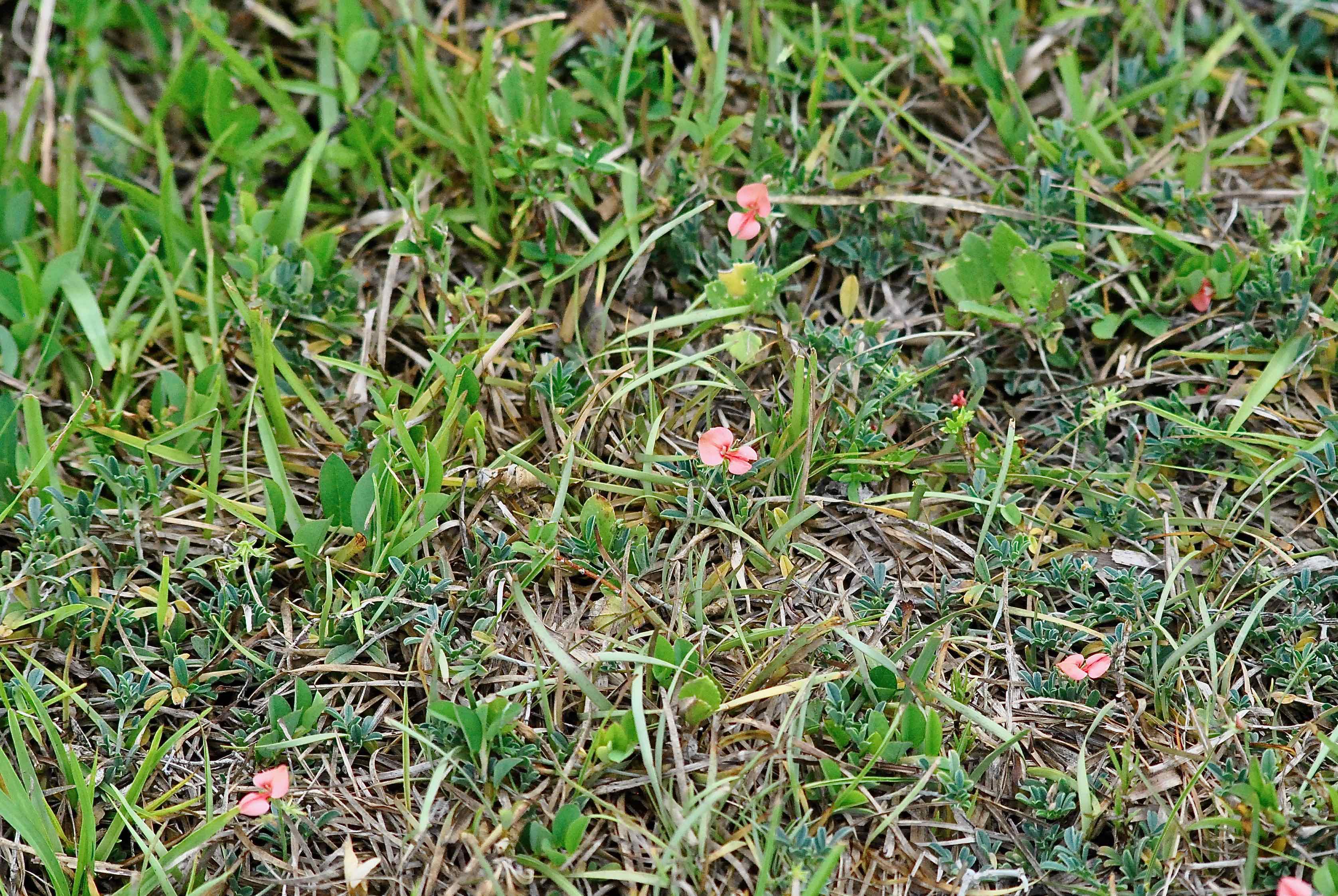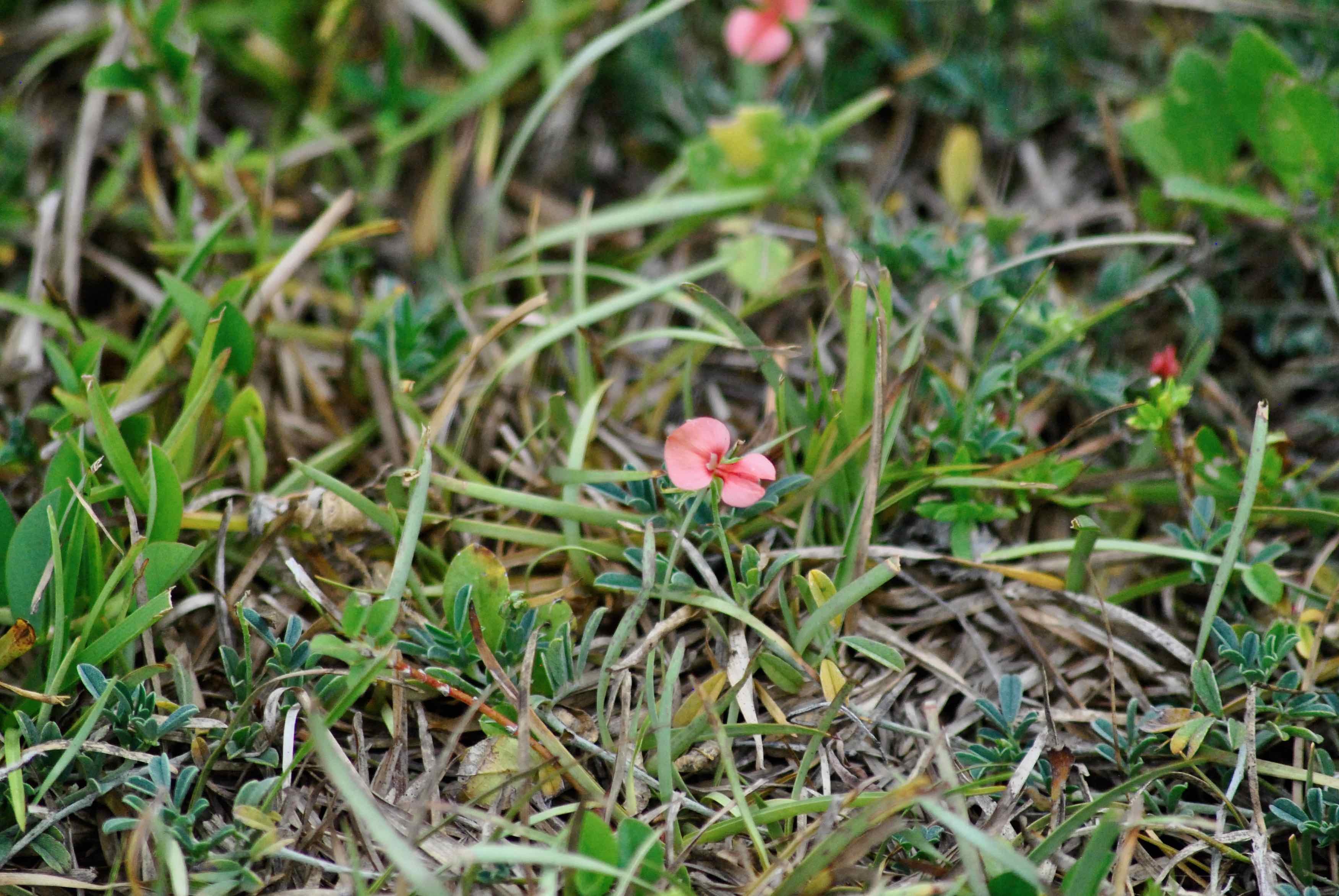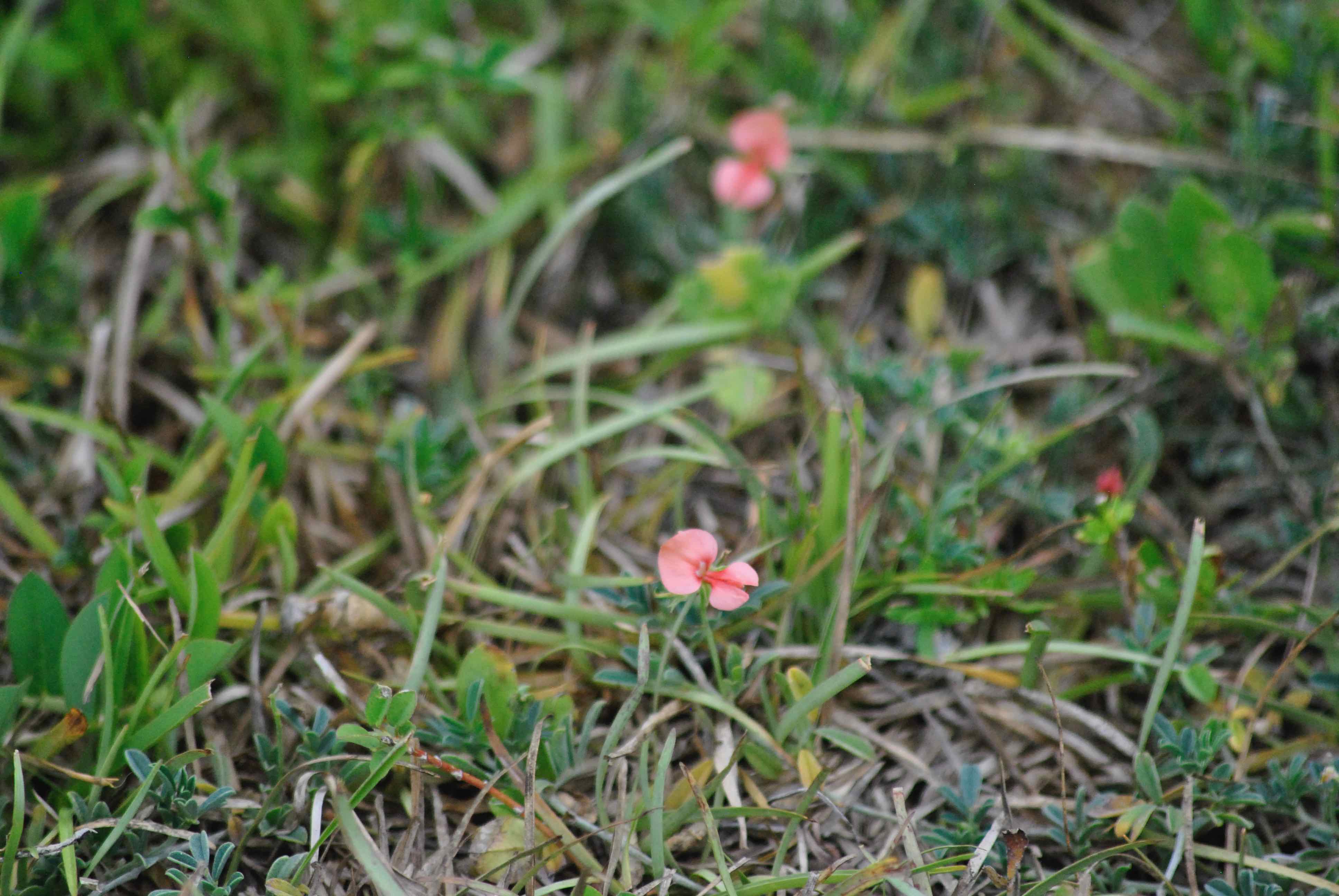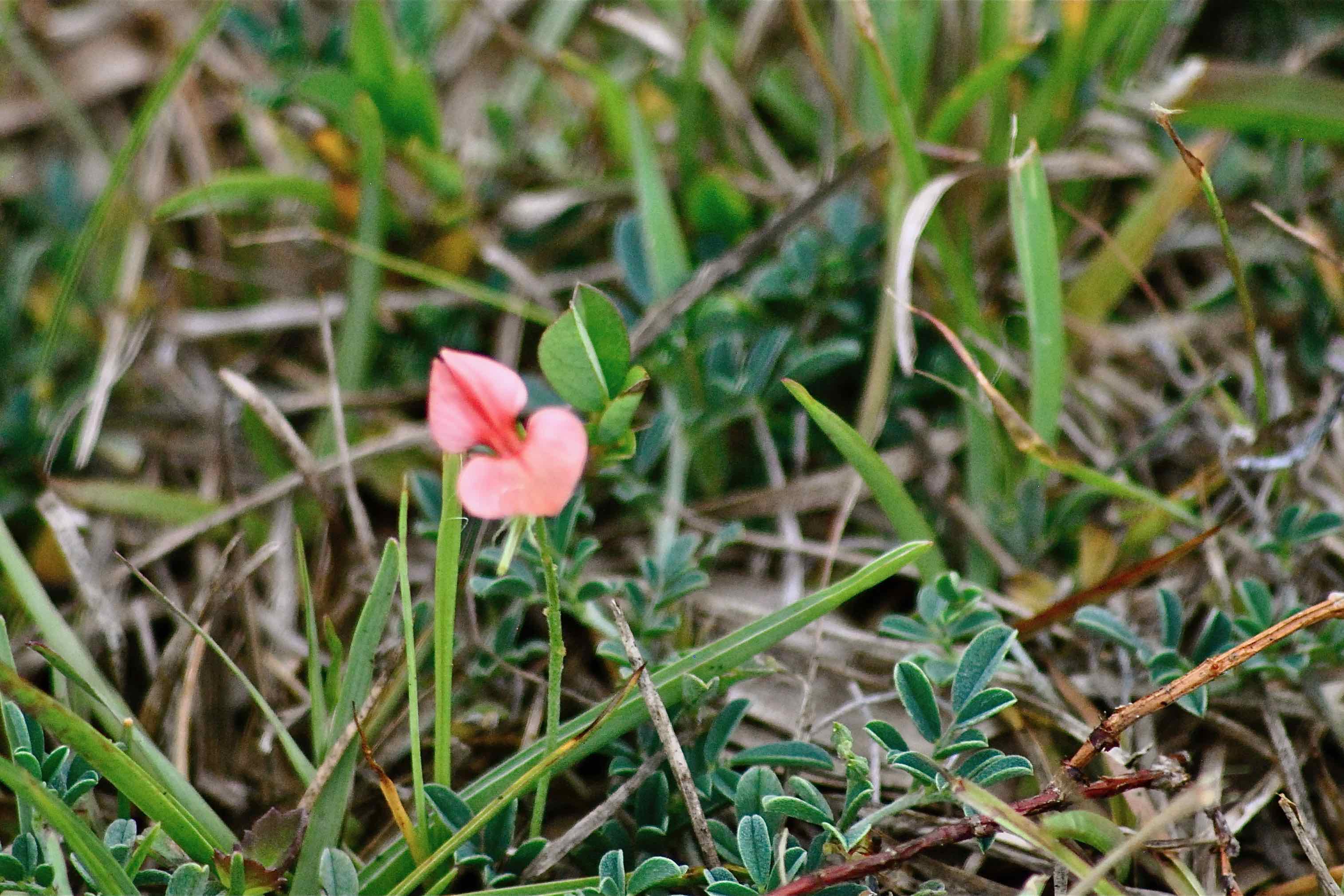
Florida Coastal Indigo, photographed at Shark Valley, Everglades National Park, Miami-Dade County, in May 2015.
Florida coastal indigo, Indigofera miniata, is about as inconspicuous as can be. It's tiny and likes weedy areas, where it tends to blend in.
But there are those salmon-colored flowers that draw in your eye. When in bloom, it's impossible for this plant to hide. It also poses the question, where's the indigo in something so pink?
The answer in a minute, but first a word from our sponsor. Florida coastal indigo is a Florida native, which you would expect, given the name, but it's found in only a handful of Peninsula counties. The Institute for Regional Conservation classifies it as rare in South Florida, found mostly in Monroe and Miami-Dade counties, but it is not officially listed here as threatened or endangered.
It's also found throughout the Southeast as far west as Texas and north into Oklahoma and Kansas. Arkansas lists Florida coastal indigo as threatened. Parts of the Caribbean are home to this plant.
Did we mention it is tiny? It might reach three inches off the ground but it can spread and form large patches. It is a perennial, and blooms throughout the year, but not constantly. The fruit is a tiny pod. Preferred habitats include pinelands and disturbed areas, such as roadsides. We found it along side the road to the observation tower at Shark Valley.
It serves as a host plant for the gray hairstreak, common dogface and other butterflies. Animals will graze on it.
Florida coastal indigo is cultivated and used in landscaping, particularly natural scenes, restorations, flower gardens and rock gardens. According to the CRC World Dictionary of Medicinal and Poisonous Plants, Florida coastal indigo has anti-inflammatory and antiseptic properties, with the juice from the leaves being used to treat cuts and wounds.
It is a member of Fabaceae, the pea family. Other common names include scarlet pea, coastal indigo, Texas indigo and Western indigo.
As for indigo? According to Richard L. Hammer, several members of the indigofera genus were used to extract indigo dyes but not so much this particular plant. Synthetics have mostly replaced plants as the source of indigo dye.
Click on photo for larger image
Links for Florida Coastal Indigo



